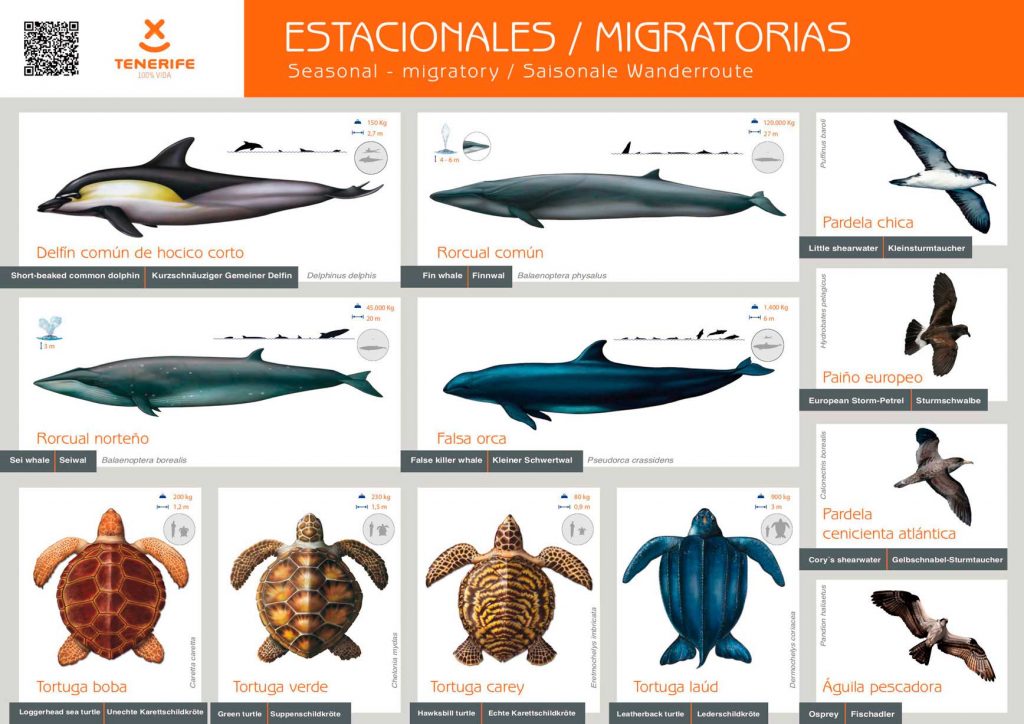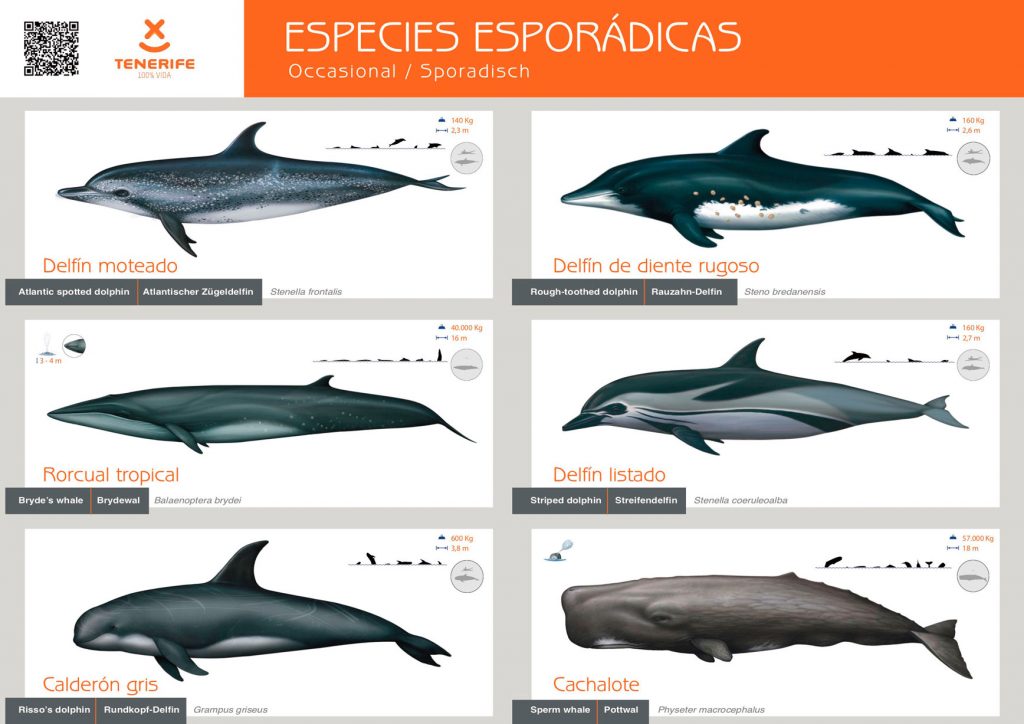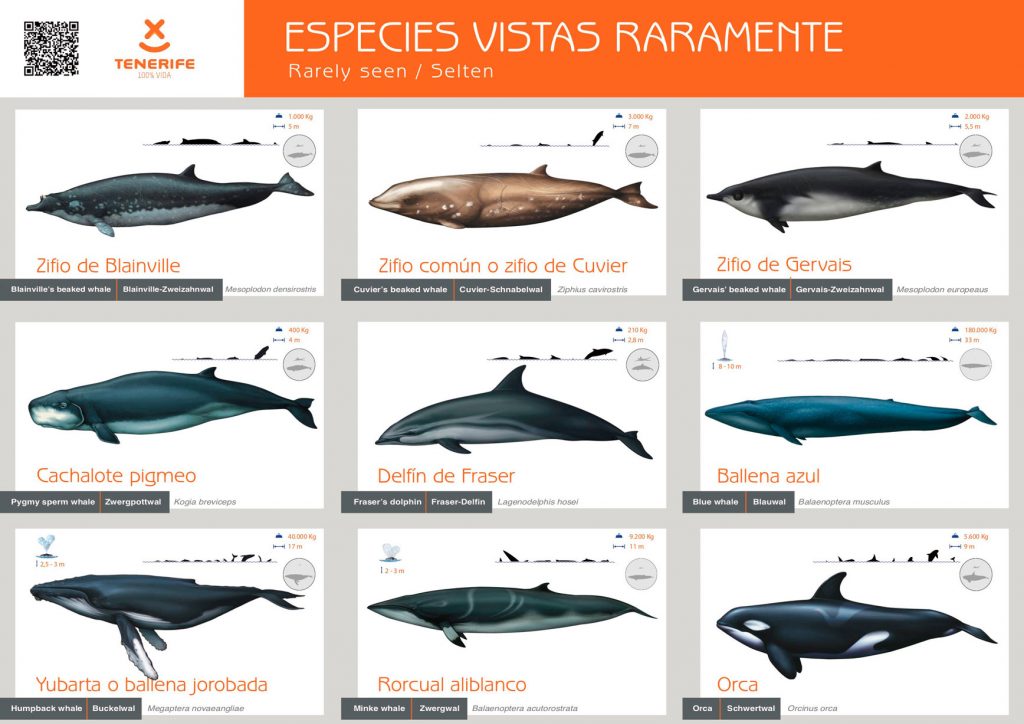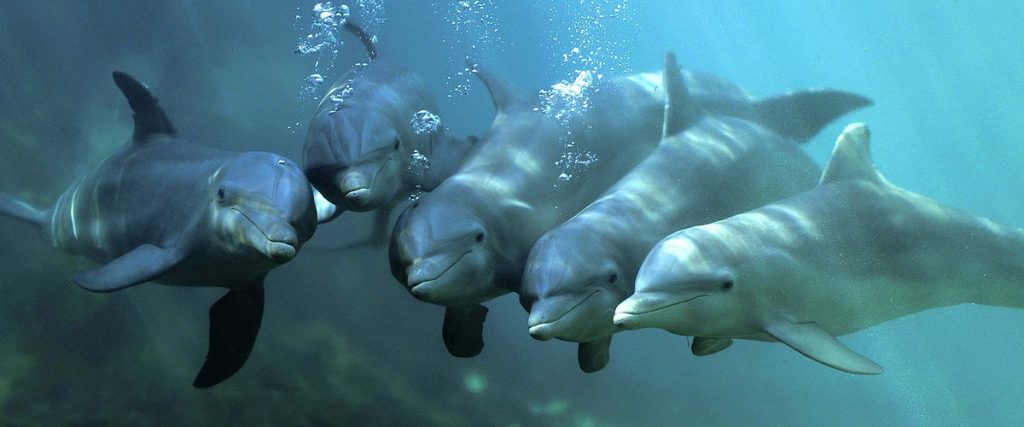
Are you curious to know the species of cetaceans that can be seen in Tenerife?
Below you will see a classification of all the species that can be found in Tenerife waters according to seasonality, along with a description of each one of them.
Remember that you can see them in first person by booking one of our whale watching tours in Tenerife.
Resident cetacean species in Tenerife
Bottlenose dolphin
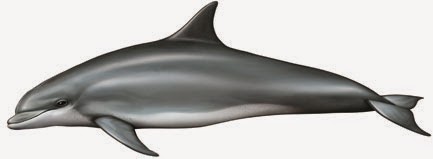
The bottlenose dolphin is a fascinating species full of nuances. Endowed with a great intelligence and a sociable character, these dolphins live in groups of more than a dozen individuals and can live up to 30 years.
Ranging in length from 2.5 to 3 metres, these dolphins are recognisable by their dark grey colour and their fondness for surfing in the wake of boats. They are also expert hunters who collaborate with their pod mates to hunt their prey, which they catch with their teeth and then swallow them without chewing.
Although they are a resident species, bottlenose dolphins are highly adaptable and can live in different marine habitats, from cold to warm waters. Their ability to communicate and their agility allows them to manage with skill in the underwater world.
Tropical Calderon
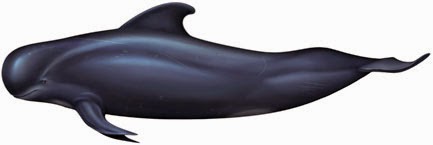
Pilot whales, also known as pilot whales, are a fascinating species belonging to the dolphin family. Although they are large oceanic dolphins, their size has allowed them to be considered a whale. After the killer whale, they are the largest oceanic dolphin, reaching up to 5 meters and weighing up to 2 tons.
These cetaceans are resident in the Canary Islands and are very easy to see in the water. Their colour is almost black and their head has a convex shape with a small beak. They feed especially on squid, although they can also eat fish.
Pilot whales are very social cetaceans and usually live in groups of up to thirty individuals. They are expert swimmers and are agile in the underwater world. It is an incredibly interesting species and deserves to be known for its large size and fascinating way of life.
Sporadic cetacean species in Tenerife
Spotted dolphin

The spotted dolphin or painted dolphin is commonly found in the Atlantic and around the Canary Islands.
It is recognisable by its small figure and the black and white spots that adorn its skin, although the young and the youngest specimens lack these characteristics.
A species of dolphin first discovered about two centuries ago and since then has become one of the most curious and sociable marine species known to mankind.
If you are on a whale watching excursion in Tenerife, you will probably find this dolphin doing acrobatics and jumps close to your boat. Make sure you have your camera ready to capture these unforgettable moments.
Rough-toothed dolphin

Rough-toothed dolphins are a unique and little known species. Although they do not follow a seasonal pattern, these wonderful animals can occasionally be seen in the waters of the Canary Islands when they come to feed and breed.
These dolphins have a grey body with some parts of their body in shades of pink and white. They are agile and fast animals, able to dive for fifteen minutes to hunt squid and other fish with which they feed.
Estos delfines se agrupan en manadas de entre 10 a 30 ejemplares para navegar y buscar alimentos.
Bryde’s whale

During our whale watching excursions in the marine protected area of Teno – Rasca, we always hope to meet fin whales, a species that regularly visits this archipelago.
These whales feed close to the surface, creating an incredible spectacle when they begin to hunt small schools of fish, accompanied by dolphins and seabirds such as the Cory’s shearwater and the yellow-legged gull.
This competition for food captures the interest of observers, offering an experience worthy of a National Geographic documentary.
Striped dolphin

Watching striped dolphins is an incredible experience, as seeing them move so fast and perform their aerial activities is fascinating. If we are lucky and you can enjoy their presence, it is definitely an experience you will never forget.
On our whale and dolphin watching tours in Tenerife it is common to see different species of dolphins, but one of the least observed is the striped dolphin. This species is characterized by moving in large groups, from 10 to more than 100 individuals.
This is a very active species, which performs synchronized jumps and other unique aerial activities, such as flying with its tail over the surface of the ocean. These dolphins are small in size (about 2.4 meters), can reach 160 kg and live up to 60 years.
In addition, they have a maximum speed of 45 kilometres per hour and in Tenerife they feed mainly on small shoals and small species of squid, diving to 700 metres to the bottom of the sea to hunt.
Grey cauldron
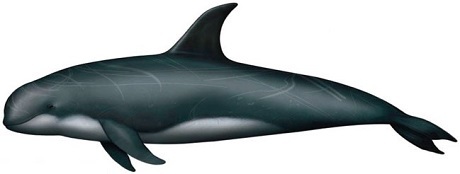
Risso’s dolphins are a unique species of dolphin. These beautiful animals have a robust body and lack a prominent beak or rostrum that distinguishes them from other dolphins.
Their average length is 3 meters when adult, although some specimens can reach 4 meters. They weigh around 300 kg, and can reach up to 680 kg.
They are known to live in groups of 5 to 25 individuals, although groups of more than 300 animals have been seen.
A particular characteristic of grey pilot whales is that they are sometimes seen semi-submerged, with the head down showing the peduncle and caudal fin.
These dolphins are shy with boats, but they are not evasive. They can be found in the Canary Islands throughout the year. It is a unique and beautiful species that deserves to be protected and respected.
Sperm Whale

The sperm whale is an impressive mammal that can be seen in Tenerife from time to time. Their striated skin and large head, which contains the largest brain in the world, make them easily recognizable. They can reach 18 meters long and weigh up to 50 tons.
Sperm whales are fascinating and powerful animals that deserve to be admired and protected. Their large size and their ability to dive to great depths make them a unique species in the animal world.
It is the largest toothed predator that exists and feeds mainly on squid and fish, diving up to three kilometers deep to hunt. They are social animals that live in small groups and are listed as a vulnerable species by the IUCN due to the intense hunting that took place in past centuries.
Seasonal or migratory cetacean species in Tenerife
Short-snouted common dolphin

Short-snouted common dolphins, also known as Delphinus delphis, are marine animals that inhabit the open sea, usually in areas with depths greater than 180 m.
These dolphins prefer areas with strong upwelling, such as continental shelves and cliffs. They move at speeds of 5 to 7 miles per hour, although they have been known to reach up to 29 miles per hour in pursuit of prey. These animals move up to 200 miles in 48 hours, relating their movements to seasonal changes in the fish population.
They feed on small fish such as herring, sardines, anchovies, hake, as well as squid and octopus, being able to eat up to 18-20 pounds of fish per day. To feed, dolphins make forays of up to an hour, diving under schools of fish to bring their prey to the surface.
They are very social, so we rarely find them alone, traveling, eating and even breathing together.
Fin whale

The fin whale feeds on the shoals of fish that move with the currents and upwellings that occur between the volcanic islands.
When these animals arrive, they usually do so in groups, accompanied by seabirds and dolphins. That’s why on whale and dolphin watching tours we can see fin whales feeding on fish, in addition to a variety of marine animals.
The fin whale, also known as the “greyhound of the sea”, is a migratory species characterized by its great speed, which can reach 35 kilometers per hour. It reaches a length of more than 20 meters and a weight of more than 50 tons.
It is found in all the world’s oceans, but a recognised subspecies, the one that lives near Tenerife, only inhabits the North Atlantic.
During the winter, the fin whale breeds in warmer temperate and tropical waters. During the summer it sails to oceans closer to the poles, where there is a greater supply of food.
It is a filter feeder and sometimes breaches the surface of shoals or deeper water for krill or other crustaceans, which are found at depths of up to 200 meters.
Their migration patterns remain a great mystery.
Northern Minke Whale

The minke whale is an imposing whale. It reaches a length of 17.1 meters in males and 18.6 meters in females, and weighs 25,000 kilos.
It has a slender, dark silhouette, similar to the minke whale, although larger.
Its head is narrow when viewed from above and has a well-defined crest. Its colouring is dark grey or brown, and its ventral area is whitish.
This whale is one of the largest and most powerful whales, after the Blue Whale and the Fin Whale. It is impressive to watch it gliding through the sea with its majesty and beauty.
False killer whales

Another of Tenerife’s most spectacular inhabitants is the false killer whale. This creature is commonly seen in large groups, with more than 10 specimens. It can weigh up to 1,500 kg and reach up to 6 metres in length.
In fact, it is called “false killer whale” because it has several similarities with the killer whale: its shape, feeding and behaviour are very similar. The false killer whale usually feeds on squid and fish, and hunts other cetaceans. It is a social and fascinating animal that deserves to be discovered.
Cetacean species rarely seen in Tenerife
Zifio de Blainville

During our whale and dolphin watching tours in Tenerife, the Blainville’s beaked whale is one of the least observed species. Although we can find these cetaceans solitary, there are also groups of up to 10 individuals of different ages.
These marine creatures have an average length of 4 – 5 metres with a maximum weight of one tonne. Their body is robust and their face and dorsal fin are of moderate size. Their colour is dark grey on top and lighter on the underside.
They are very shy animals that spend most of their time submerged at depths of up to 1600 metres. Their diet consists mainly of squid and fish.
Cuvier’s beaked whale or common beaked whale

Cuvier’s beaked whale, also known as common beaked whale, is a medium-sized cetacean that inhabits our seas but is difficult to see due to its evasive behaviour.
In the Canary Islands, the maximum size recorded for stranded specimens is 6.12 metres for females and 5.93 metres for males, with an average length of 4.9 metres.
Cuvier’s beaked whales are solitary or gather in small groups of 2-3 individuals. Much is still unknown about its biology, although it is known that both sexes mature when they reach about 5 metres.
These cetaceans dive to great depths to catch their food, which consists basically of cephalopods, crustaceans and mesopelagic fish.
Cuvier’s beaked whales have become a vital species for the seas, but they are increasingly threatened. It is therefore important to protect these marine creatures and preserve their habitat.
Gervais beaked whale

The Gervais’s beaked whale is a little known cetacean species, which mainly inhabits the tropical and temperate waters of the Atlantic, especially in the West Indies.
It is an impressive animal, with a length of up to 5.2 m for females and 4.5 m for males, and weighing between 1 and 2 tonnes. At birth they are about 2.1 m long and weigh about 50 kg.
It is navy blue or dark grey on the back and sides, lighter on the belly, and young animals have a white belly. The caudal fin is dark grey on both sides and may have white scars on the back and upper sides.
Its presence in European waters is scarcely documented. It is a very interesting species for marine life scholars, and undoubtedly one of the mysteries still to be deciphered in the world’s seas.
Pygmy sperm whale

The pygmy sperm whale is a smaller cetacean than its giant cousin the sperm whale, although the former is more difficult to find.
It has a sac in its intestines that contains a dark red liquid. When the pygmy sperm whale is frightened, it expels this fluid in order to disorientate and confuse its predators.
Small in size, they are about 1 metre long at birth and reach 3.5 metres in length as adults, weighing about 400 kg.
Their head is large in comparison to their body, and they have a very small lower jaw and a spiracle that is slightly displaced to the left when viewed from above. Its dorsal fin is much smaller than that of the dwarf sperm whale.
It is difficult to know the exact number of pygmy sperm whales in the world, as they are not easy to see and are often confused with other cetaceans. For this reason, the IUCN has classified them as a data deficient species.
Fraser’s dolphin
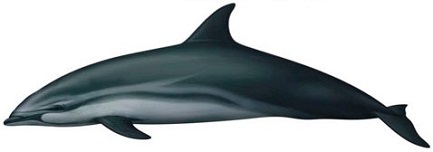
Fraser’s dolphin is no easy task – it is a species that has only recently been “rediscovered” and there is still much to learn about it. This species was first scientifically described by Francis Charles Fraser in 1956, after a mislabelled skeleton in the British Museum came to his attention.
This species is characterised by its small size, with a length of 2.7 metres and an approximate weight of 210 kg. It is distributed in tropical and warm temperate waters.
Unlike other cetaceans, the Fraser’s dolphin has smaller genitalia, which makes it easier to identify the species. In addition, the dark band that runs along the entire back of the animal should be noted for identification.
This species is usually confused with the striped dolphin. As for its diet, it feeds on crustaceans and a wide variety of fish of various sizes, and usually swims in pods of hundreds.
Unfortunately, it is a protected species and is believed to be almost extinct, and the current population is unknown.
Blue whale

The blue whale is a beautiful cetacean that can rarely be seen in Tenerife. This species stands out for its enormous size and its bluish-grey, light grey and white colours.
Sometimes greenish and yellowish areas can be observed due to the diatoms that live in its skin. The U-shape of the skull, the single central ridge and the small, set back dorsal fin in proportion to the size of the whale, are features that help it to be identified.
The average length of the blue whale is 25 metres, although the Antarctic subspecies reaches 30 metres. The weight of adults varies between 80 and 130 tons, with a maximum recorded weight of 178 TONS.
This species gathers in groups of 3 or 4 individuals that maintain strong bonds with each other.
They reach sexual maturity at a size of 22-23 metres and after a gestation period of 11-12 months, calves weighing 8 tonnes are born.
Their diet is based on a few species of planktonic crustaceans known as “krill”.
Humpback or humpback whale
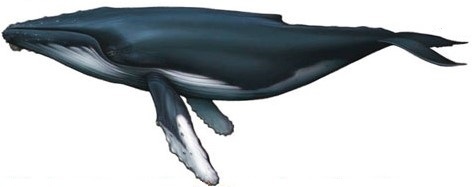
When it comes to seeing unique animals in Tenerife, the humpback whale is one of the most fascinating rare species. This sea creature is very friendly and enjoys the company of other dolphins and whales.
What makes it really special is its ability to perform acrobatics: sometimes it propels itself to the surface of the water and lands with a big blow. The spectacle it puts on is breathtaking.
The humpback whale is a huge creature, with a length of up to 19 metres and a weight of 36,000 kg. This species was the victim of intense hunting and its population was drastically reduced to the point of near extinction. Fortunately, measures have been taken to protect this sea creature and there are now an estimated 80,000 of them.
Minke whale

Bryde’s whales are a fascinating and mysterious species. This species of whale can reach up to 16 metres in length and 49 tonnes, making it an impressive sight to behold.
These whales feed on small shoals of fish, swimming rapidly towards them with their mouths open. Occasionally, they are seen competing with seabirds and pods of dolphins in a struggle for food.
What is most impressive about this whale is the sudden change of direction it makes when feeding. It is common to see them exhale underwater as they begin to surface, leaving a trail of bubbles. When they surface, we usually see only the blow, the head and often also the dorsal fin.
These characteristics make the fin whale one of the most special species of whales that can be seen in Tenerife.
Orca
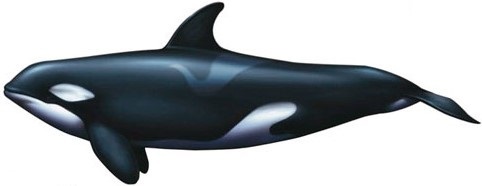
It is a real surprise to come across a killer whale in Tenerife, a migratory species that with its large size and its black and white colour certainly attracts attention.
These impressive animals can reach up to 9 metres in length and weigh up to 5,500 kg, making them one of the most versatile predators in the sea.
Their diet is varied, ranging from fish, squid, to seals and even white sharks. For this reason, killer whales are known as “killer whales”. They live in groups of up to 40 individuals and some can reach 100 years of age. So although it is not easy to see them in Tenerife, you never know…. You have to keep an eye out for them!


